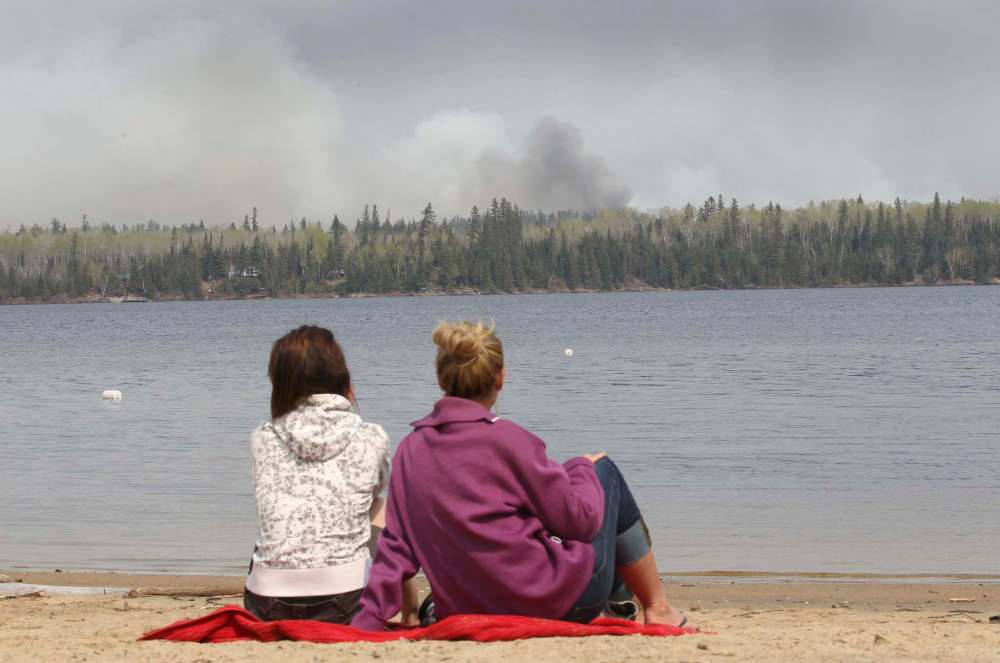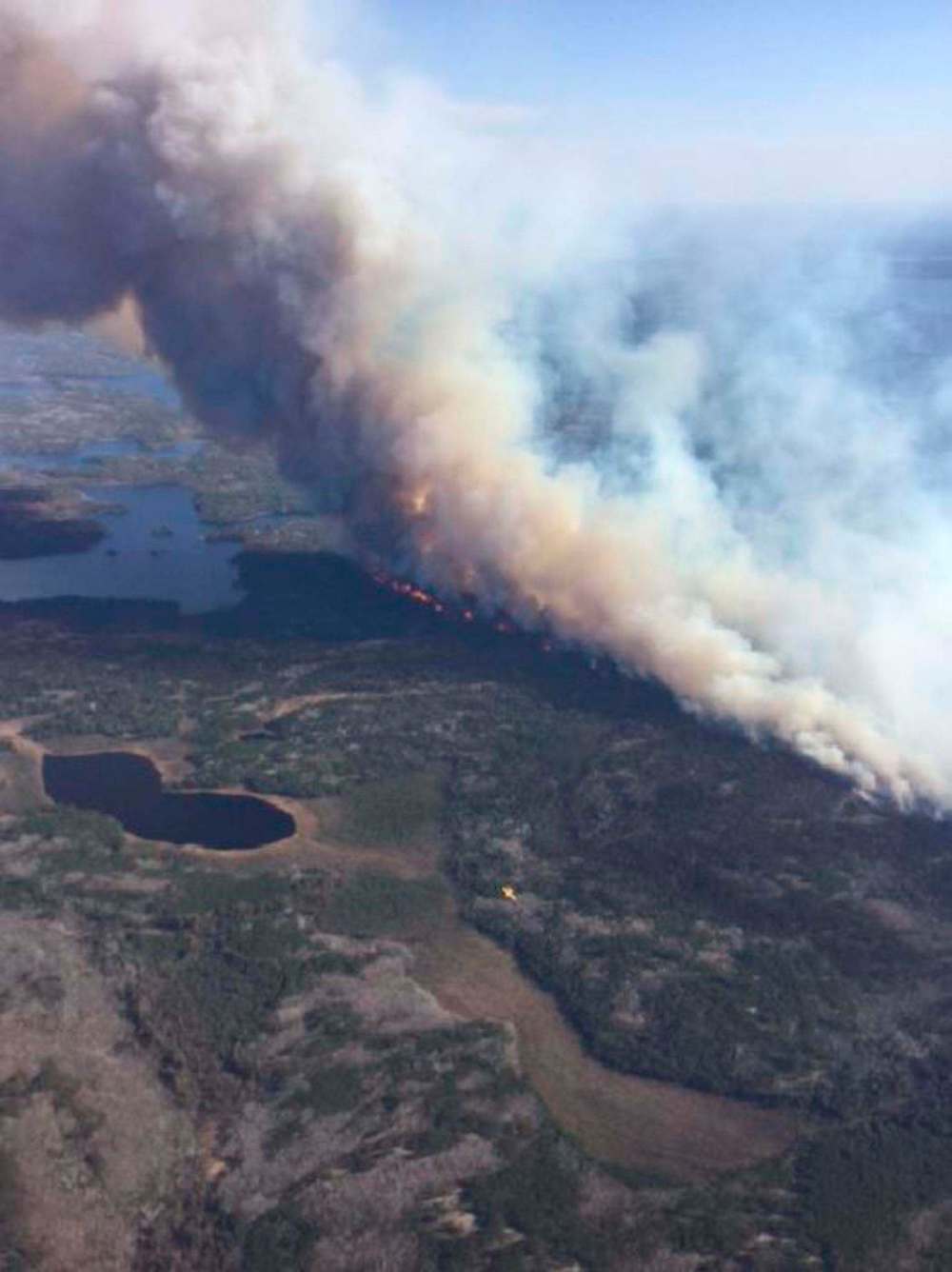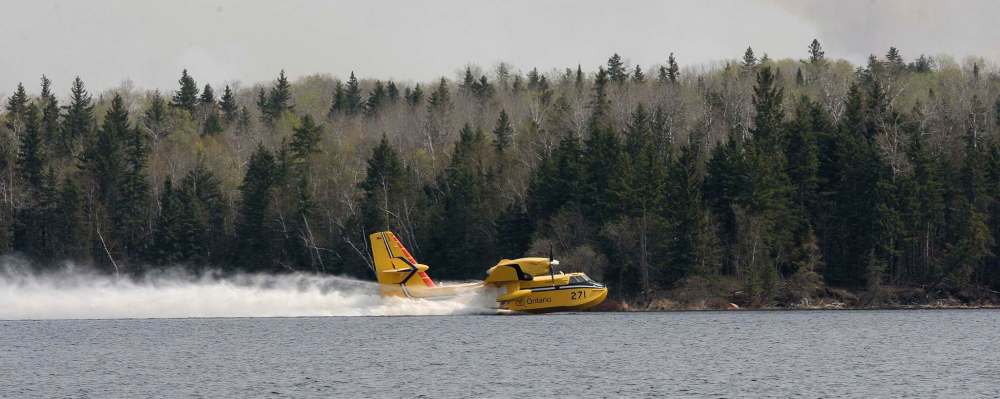Whiteshell forest fire now larger than 5,000 hectares
Blaze at Beresford Lake now 56,000 hectares
Advertisement
Read this article for free:
or
Already have an account? Log in here »
To continue reading, please subscribe:
Monthly Digital Subscription
$1 per week for 24 weeks*
- Enjoy unlimited reading on winnipegfreepress.com
- Read the E-Edition, our digital replica newspaper
- Access News Break, our award-winning app
- Play interactive puzzles
*Billed as $4.00 plus GST every four weeks. After 24 weeks, price increases to the regular rate of $19.00 plus GST every four weeks. Offer available to new and qualified returning subscribers only. Cancel any time.
Monthly Digital Subscription
$4.75/week*
- Enjoy unlimited reading on winnipegfreepress.com
- Read the E-Edition, our digital replica newspaper
- Access News Break, our award-winning app
- Play interactive puzzles
*Billed as $19 plus GST every four weeks. Cancel any time.
To continue reading, please subscribe:
Add Free Press access to your Brandon Sun subscription for only an additional
$1 for the first 4 weeks*
*Your next subscription payment will increase by $1.00 and you will be charged $16.99 plus GST for four weeks. After four weeks, your payment will increase to $23.99 plus GST every four weeks.
Read unlimited articles for free today:
or
Already have an account? Log in here »
Hey there, time traveller!
This article was published 09/05/2016 (3448 days ago), so information in it may no longer be current.
The Whiteshell wildfire has grown to 5,100 hectares and the Beresford Lake wildfire to 56,000 hectares, the province reported just after 1 p.m. Tuesday.
But there is little further new information in the latest fire bulletin.
Dry and windy conditions are driving the wildfires, and all evacuation orders remain in effect, the province said. It reported only minor damage so far to some sheds in the Beresford Lake area.
The provincial fire map shows the wildfires close to Ingolf, Ontario, which has been evacuated, but still beyond the main rail line and several kilometres from any portion of Caddy Lake.
At Caddy Lake, Howard Manchulenko first saw the smoke at 3:30 p.m. on Thursday while he was working on his deck. In fact, he may have been the first person to phone it in to Sustainable Development.
“I looked up and next thing I knew the sky was full of smoke,” Manchulenko told the Free Press on Monday afternoon.

He spoke as the province announced the east shore of Caddy Lake has been closed until further notice and 50 cottages on Caddy were ordered evacuated. Evacuations also include seven permanent homes on West Hawk Lake and three on Caddy Lake.
Of the two out-of-control fires along the Manitoba-Ontario border, a fire near Nopiming Provincial Park is by far the largest. As of Sunday, the Nopiming fire was 300 square kilometres and the fire near Caddy Lake in the Whiteshell was 12 square kilometres, although the Whiteshell fire threatens an area that is more populated.
Manchulenko and wife Michelle’s cottage is on the west shore of Caddy. A steady stream of yellow water bombers pick up water just beyond their dock all day long.
The fire is burning directly north of the Manchulenko cottage, between Nora and Caddy lakes. The fire right now threatens a chain of small lakes north of Caddy named, from south to north, Nora, Kirk, Florence and Marion lakes.
Manchulenko said the fire moved at least a kilometre closer Sunday night, pushed by an east wind. It was about five kilometres from his cottage Monday afternoon, he estimated.
The couple has stayed at the lake throughout the fire, and have not been asked to evacuate as yet. Manchulenko expects that may eventually happen.
“Until it rains, they’re not really going to be able to put this out,” he said. Rain is not expected until possibly Wednesday and Thursday.
A steady stream of yellow water bombers pick up water just beyond the Manchulenko dock all day long.
Manchlenko said it takes the water bombers three minutes to complete their circuit between skimming water from Caddy, dumping it on the fire, and returning for a refill. It takes about 15 seconds to fill up with water.
The planes fly into Caddy Lake along the channel that connects Cross and Caddy Lakes, a favourite canoe route that includes going under the CP Rail tunnel.
The couple can watch the red glow of the fire above the tree line at night, including flames up to 10 metres high, that aren’t visible by day.

There has been no word on what started the fire. Speculation within the park is it could have been started by a spark from a train on train tracks. However, the Manchulenkos said there was thunder and lightning Wednesday night until about 2 a.m. Thursday.
Staff with Manitoba Conservation were going door-to-door Monday morning to ensure residents on the east shore are out of their cabins, including Green Bay Resort which has about 10 cabins and dozens of trailers.
At Nopiming, there is a mandatory evacuation of the Beresford cottage subdivision. An evacuation order has been issued for Wallace Lake, which affects 61 cottages and one lodge. Officials are monitoring conditions at Long Lake closely.
Pushed by wind, the fires have continued to grow despite the efforts of ground crews, water bombers and helicopters from Manitoba Sustainable Development and the Ontario Ministry of Natural Resources.
In the Whiteshell, hiking trails are closed at Hunt Lake, Mantario and McGillivray Falls. Highway 312, which runs from Highway 44 to Ingolf, Ont., is closed to traffic.
The fire that forced Saturday night’s evacuation of cottages in the extreme northeast end of West Hawk Lake grew Sunday to 10 square kilometres in size from seven square kilometres on Friday. Winds pushed the Whiteshell-area fire east and cottagers at McDougall’s Landing on PR 312 were also ordered to leave. The south Whiteshell emergency plan was being activated and attempts were underway Saturday night to install sprinkler kits on structures.
wfpslideshow:378694451:wfpvideo
The fire was first spotted Thursday about seven kilometres northeast of Caddy Lake. Travellers have been asked to stay away from the fire zone. A group of cottagers on the northeast side of Caddy Lake watched the waterbombers from Manitoba and Ontario refilling in front of them Sunday and decided to leave as a precaution.
“People are working really hard to save the community,” said Jan Watters. “I think they’re doing a good job.”
The cottager from the area that’s accessible by boat said she and others were packing up and heading home to give the park staff and firefighters one less group of people to worry about if the winds change and the situation worsens.
“We think it’s the sensible thing to do” She’d been there for a week and said the temperature had fallen to around 14 C Sunday and winds had died down to southeast 20 km-h. They’re hoping the fire steers clear of their cottage but are taking a few mementoes with them just in case.
How the fires grew
“It’s beyond my control,” she said of the wildfire. “It’s up to the wind conditions, the temperature and the humidity.”
Burning permits for the eastern, central and western areas of the province remain cancelled and motorized backcountry travel is banned between noon and 7 p.m. daily in southeast Manitoba. The boundary of the restricted area is from PR 302 east to the Ontario border and from the U.S. border north to Lake Winnipeg and extending north to the Wanipigow River.
In Birds Hill Provincial Park, campfires will only be allowed in the approved fire pits between the hours of 8 p.m. to 8 a.m.
Travel restrictions are also in place in western Manitoba for Spruce Woods Provincial Park and Spruce Woods Provincial Forest areas, Camp Hughes and the wildlife refuge at the community of Spruce Woods near CFB Shilo, including no motorized back country or remote cottage access unless approved by a travel permit, camping only in developed campgrounds, and launching and landing of boats restricted to developed shoreline.
A provincial fish hatchery in the Caddy Lake fire zone near McDougall Landing has also been largely evacuated, with the exception of two staff workers.
“The hatchery manager and a technician with formal firefighting training are staying on site to provide caretaking services and care for the fish. They are in regular contact with the fire team in case of any changes in the area,” a provincial spokeswoman confirmed late Monday.
– with files from Carol Sanders, Nick Martin and Alexandra Paul


History
Updated on Monday, May 9, 2016 12:37 PM CDT: Adds photo, map
Updated on Monday, May 9, 2016 12:45 PM CDT: Updates main art
Updated on Monday, May 9, 2016 6:21 PM CDT: Adds hatchery evacuation information.
Updated on Monday, May 9, 2016 7:26 PM CDT: Adds video
Updated on Monday, May 9, 2016 7:39 PM CDT: Adds factbox
Updated on Tuesday, May 10, 2016 1:19 PM CDT: Updates with size of fires on Tuesday
Updated on Tuesday, May 10, 2016 1:49 PM CDT: Adds photo from Tuesday





